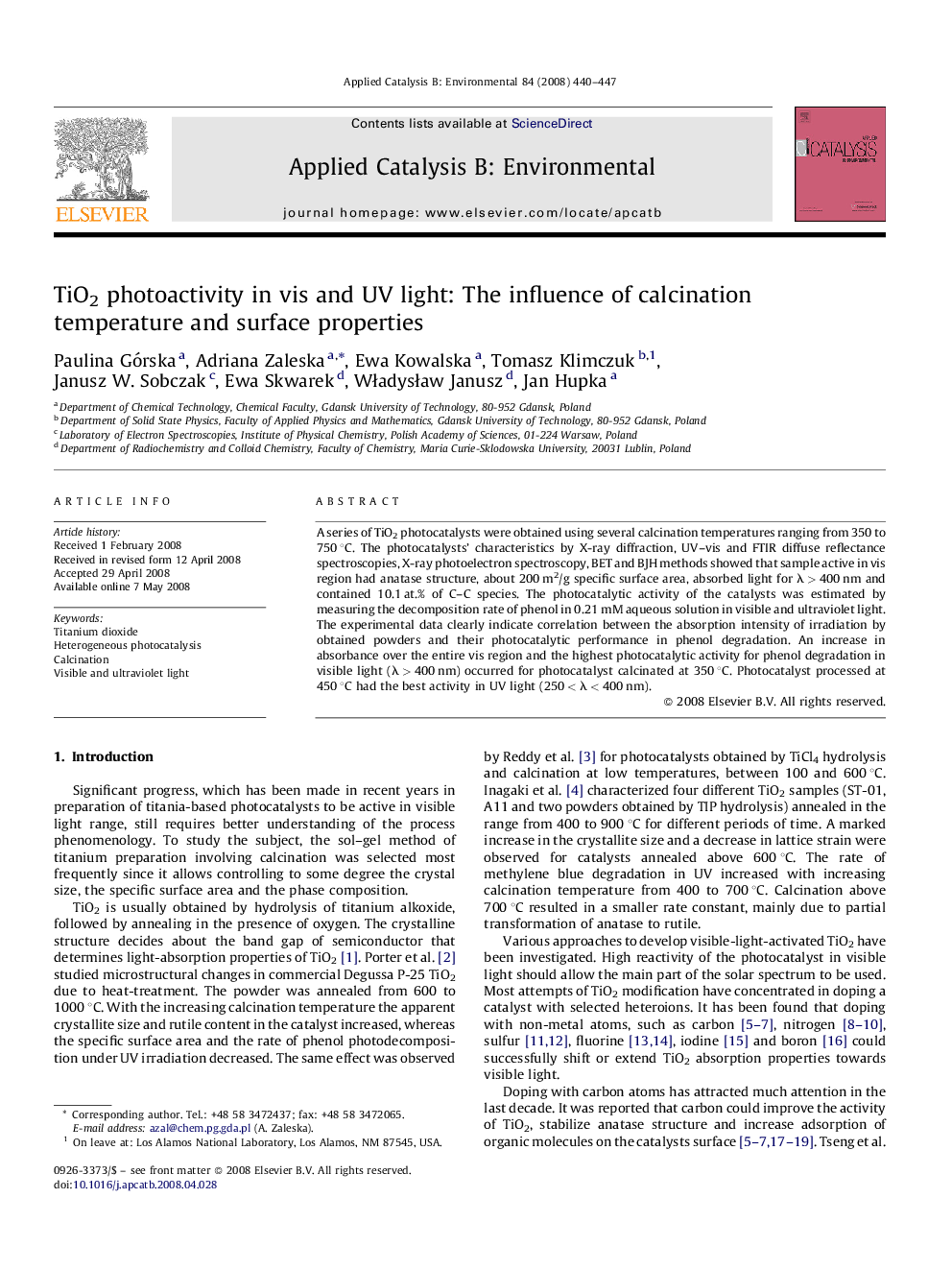| Article ID | Journal | Published Year | Pages | File Type |
|---|---|---|---|---|
| 48177 | Applied Catalysis B: Environmental | 2008 | 8 Pages |
A series of TiO2 photocatalysts were obtained using several calcination temperatures ranging from 350 to 750 °C. The photocatalysts’ characteristics by X-ray diffraction, UV–vis and FTIR diffuse reflectance spectroscopies, X-ray photoelectron spectroscopy, BET and BJH methods showed that sample active in vis region had anatase structure, about 200 m2/g specific surface area, absorbed light for λ > 400 nm and contained 10.1 at.% of C–C species. The photocatalytic activity of the catalysts was estimated by measuring the decomposition rate of phenol in 0.21 mM aqueous solution in visible and ultraviolet light. The experimental data clearly indicate correlation between the absorption intensity of irradiation by obtained powders and their photocatalytic performance in phenol degradation. An increase in absorbance over the entire vis region and the highest photocatalytic activity for phenol degradation in visible light (λ > 400 nm) occurred for photocatalyst calcinated at 350 °C. Photocatalyst processed at 450 °C had the best activity in UV light (250 < λ < 400 nm).
